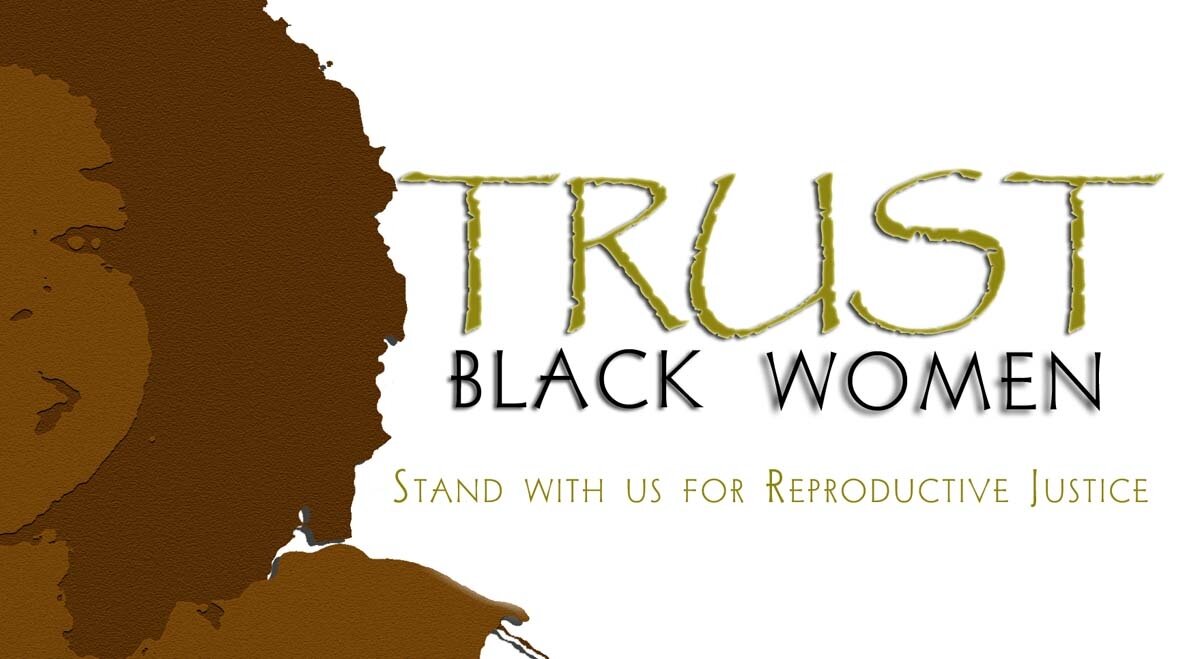From the beginning, it was obvious to SisterSong we needed to immediately respond to this unexpected campaign and legislation. The first billboards were located only minutes up the street from our national headquarters. Even before they appeared, national media like the New York Times contacted us for interviews, because our opponents sent out advance press alerts announcing the campaign.
Our response was even more vital because of critical vulnerabilities we analyzed from our perspectives as women of color, including: 1) The overt religious appeals and the distortions of black history in the campaign would make work on reproductive justice in the African American community even more difficult; 2) They used visible black leaders in the campaign to describe themselves as protecting women
and children, and falsely claim they were saving our community from the “abortion industry”; and 3) The pro-choice movement has not historically responded adequately to charges of racism and genocide, visibly flinching when race and abortion are linked in narratives about ulterior motives. These accusations can sound credible given our collective inability to thoroughly confront issues of race and power in the pro-choice movement. Women of color generally, and African American women, in particular, had to take these folks on.
Our opponents crafted this strategy in 2009 in a secret meeting on St. Simon’s Island in South Georgia between Georgia Right to Life and the Georgia Republican Party. To provide an African American woman to champion the effort, they hired Catherine Davis, who failed twice at winning a Congressional seat as a black Republican. They hoped to build an unusual alliance between white and black conservatives, using religion and false compassion for black children to not only restrict abortion access in Georgia, but to split African American voters along gender and religious lines, increasing black support for conservative causes we would not otherwise endorse.
With a predominantly Republican legislature and a weakened pro-choice base in the South, the campaign had a good chance at success. If the billboards were not challenged and the legislation passed in Georgia, we expected that similar attempts would spread virally across the country in new efforts to restrict abortion, using race as a wedge. Subsequent events justified concerns. A ballot initiative in Colorado now is comparing fetuses to slaves, declaring that unborn fetuses are equivalent to enslaved African Americans. As of this writing, it is not clear whether the Colorado initiative will succeed.
Now the same forces that have denied the country universal health care, publicly funded birth control and abortion, and comprehensive sex education are using a different approach to attack abortion by manipulating the black community. A ginned-up “conspiracy theory” that places black women as the “destroyers” of the black family through abortion has in common with previous approaches like calling us “welfare queens” – a certainty of the same outcome: an increase in disabling poverty and instability for black women and our children. Black women are the backbone and core caretakers of the African American community and we will not stand silently by when opponents viciously attack our human rights.
It became obvious that the opposition’s strategy was to present another state-initiated challenge to Roe v. Wade, although this was not their only objective. It also portended a showdown between the far right, libertarian and moderate wings of the Republican Party within Georgia. It called the question on whether the concept of “saving black babies” would work to mobilize the disparate sectors of the Georgia anti-abortion movement, some of whom are not only openly sexist, but racist. And finally, it would test whether overt religious appeals could divide African American legislators and voters, such as had been done around the country on other cultural wedge issues, such as marriage equality and immigration.
Only our organizing efforts would tell if they would succeed.

